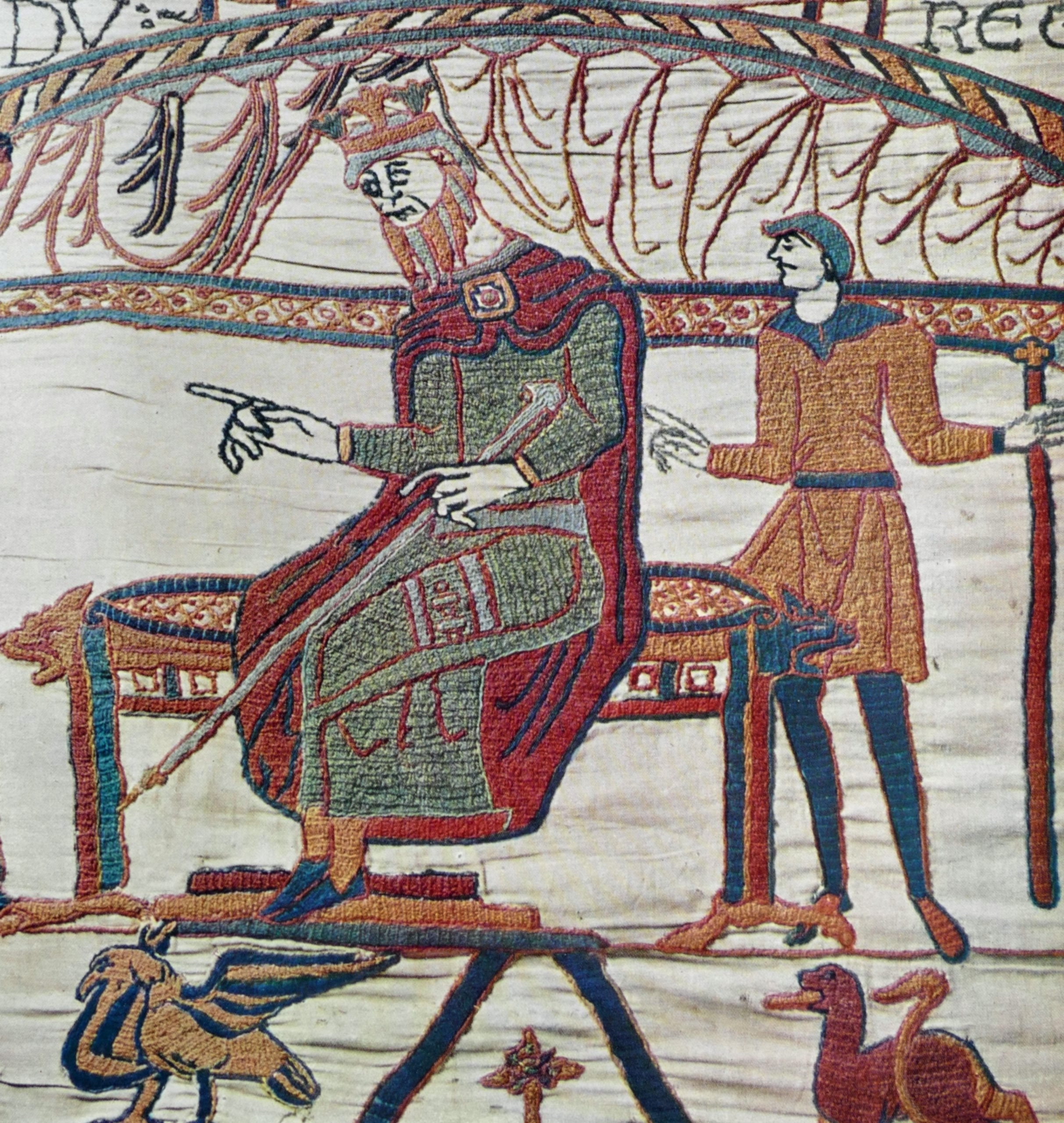
One of the greatest treasures of Western art history may have been missing a piece for years, and a French artist has been tapped to rectify that situation.
The Bayeux Tapestry, which measures about 230 feet long by 20 inches tall, depicts events leading to the Norman Conquest of England in the year 1066, with a climax at the Battle of Hastings, at which William, the duke of Normandy, triumphed over Harold II, King of England. Believed to date to the 11th century and to have been commissioned by Bishop Odo of Bayeux, the artifact is listed on UNESCO’s Memory of the World register.
“The Bayeux tapestry is one of the supreme achievements of the Norman Romanesque,” wrote Sylvette Lemagnen, conservator of the tapestry, in her 2005 book La Tapisserie de Bayeux. “Its survival almost intact over nine centuries is little short of miraculous… Its exceptional length, the harmony and freshness of its colors, its exquisite workmanship, and the genius of its guiding spirit combine to make it endlessly fascinating.”
Plate from the Bayeux Tapestry (ca. 1090), depicting the Norman army crossing the channel. Photo: Hulton Archive/Getty Images.
But even at its massive size, it is said to be incomplete by historians, who claim that it is missing a scene representing William’s coronation, which took place at Westminster Abbey on December 25, 1066.
Now, French artist Hélène Delprat has been named by the municipality of Normandy and the French Ministry of Culture to add a representation of that climactic missing scene to the artifact, which is technically an embroidery but is still widely referred to as a tapestry.
But don’t expect anything too literal. “This is neither a restoration nor a reconstruction,” the artist told Le Figaro. “I would nevertheless use my vocabulary to maintain a link with Bayeux embroidery. What I am proposing would evoke the coronation scene of William the Conqueror. [The] Bayeux embroidery itself is never literal: it does not describe, it does not illustrate. It constantly invents. It speaks. It declaims.”
Hélène Delprat in Paris, France, 2016. Photo: Edward Berthelot/Getty Images.
The new panel will be made at Paris’s Gobelins Manufactory, the state-owned tapestry factory that started out in the 15th century and is known for serving French rulers.
Delprat works in painting, theatrical installation, sculpture, and film, and has been in and out of the art world for four decades. She showed with Paris’s Galerie Maeght until 1995, when she split with the gallery. She didn’t exhibit for two decades, until a 2014 show at Galerie Christophe Gaillard, also in the French capital. Swiss-based mega gallery Hauser and Wirth snapped her up in 2023 and mounted a solo show, “Monster Soup,” at the gallery’s Paris outpost.
Hélène Delprat, Peinture – catastrophe (2023). © Hélène Delprat, ADAGP, Paris, 2024. Courtesy the artist and Hauser & Wirth. Photo: Nicolas Brasseur.
As Devorah Lauter wrote in Artnet News: “Her paintings are brimming with burlesque condensations of encyclopedic references in figurative and abstract forms, inspired by everything from ancient Greek and Renaissance culture to recent news, as well as phenomena she ‘hunts’ online, in books, and film.” The Bayeux Tapestry is a fitting piece for her to expand upon, since global conflict and military iconography are a frequent subject for the artist.
During the 18th century, the Bayeux tapestry was going on display annually at that city’s cathedral, after which it was moved to the Musée de la Tapisserie de Bayeux. The Mobilier National, which operates under France’s Ministry of Culture, and the municipality of Normandy have said that they may even be able to present Delprat’s work at Westminster Abbey at the time of the celebration of the millennium of William’s birth, in 2028. French president Emanuel Macron said in 2018 that the tapestry could be lent to the U.K. during renovations at the Bayeux museum, but some experts oppose this on account of the relic’s fragility.
“Our idea is to take advantage of the millennium year of the birth of William the Conqueror in 2027 to build a major popular event on a European scale,” Hervé Morin, president of the Normandy region, told Le Figaro. “We have the ambition to carry out a project shared by the major European regions that have been crossed by this Norman epic.”